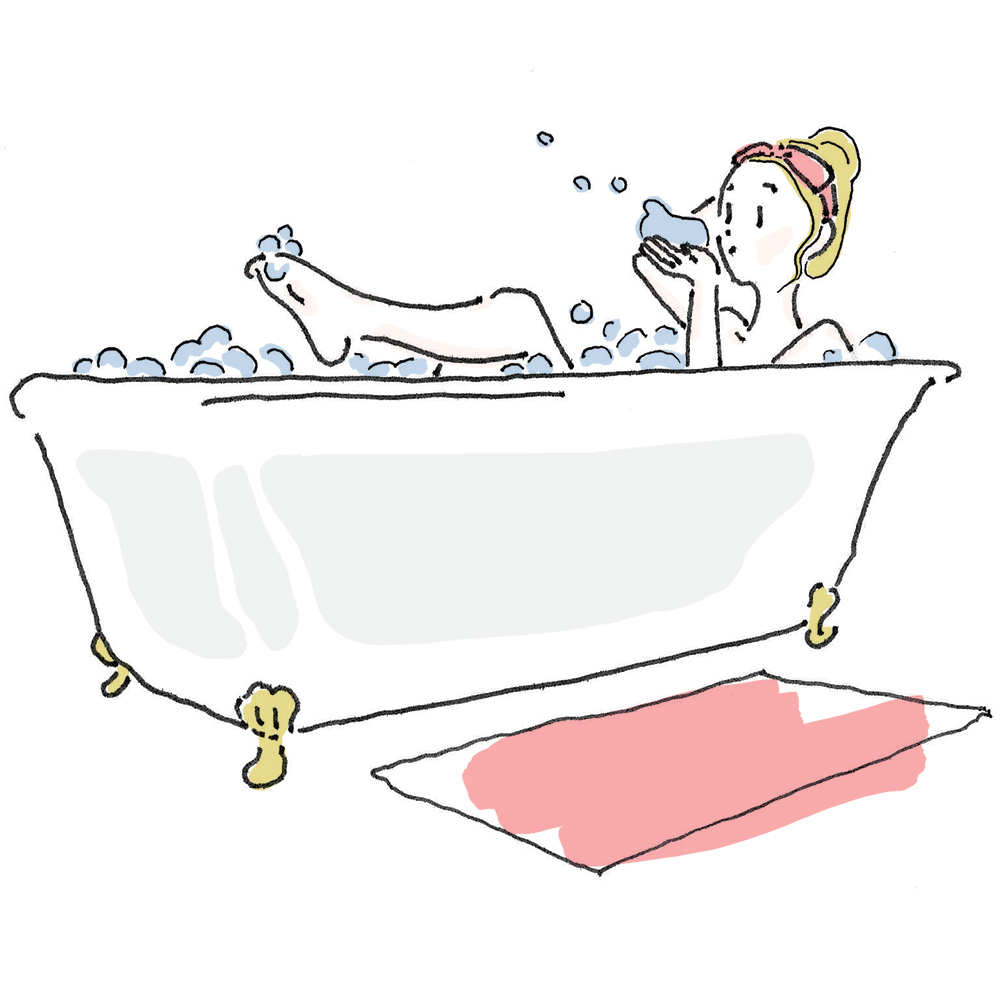
Bathroom renovations call for many design decisions. Tub or shower or both? While many homeowners are opting for a walk-in shower, some people still want to soak. From rubber duckies and bubble fun to “Calgon, Take Me Away,” we know some clients desire a luxurious bath experience. Although we hear tub sales are fewer these days, the options are still plentiful. Let’s talk tub type!
The tub selection process
As we guide clients through design decision-making, we ask a lot of questions. Understanding your daily routine, family needs, and grooming habits as well as your budget and space constraints helps us narrow down the best options for your project.
When choosing a tub for your bathroom, some things to consider include:
- How much space do you have?
- How will you and your family use the tub? Do you intend to bathe only? Or do you want to shower in it as well?
- Are there special mobility considerations?
- What is your water heater’s capacity? And if you’re going to install a large tub, will you need to add another water heater?
- What is your floor’s structural capacity?
- Is there a style you like or a particular look you want to achieve?
- What is your budget?
Ready to explore your options? Consider the details of these tub types.
Type 1—Tub / Shower Combo
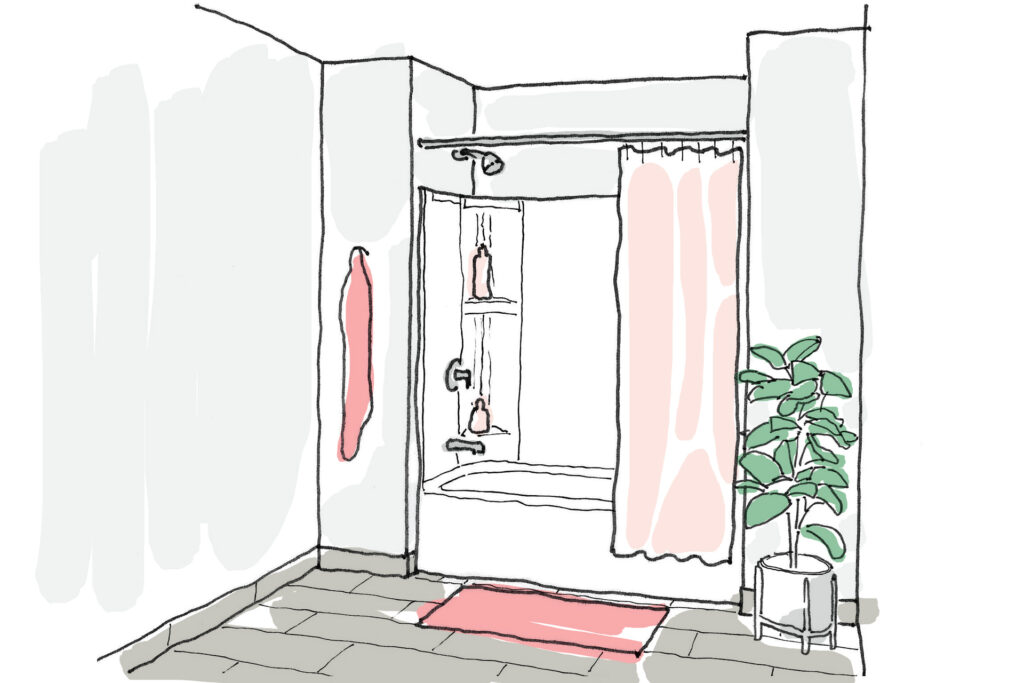
A tub/shower combo comes as a single unit with the tub, skirt, and surrounding walls all made from the same material. While some units literally come as one preassembled single piece, others may come as snap-together parts. In many cases, this includes shampoo and soap shelves pre-formed into the walls. Made of acrylic, resin, or fiberglass, tub/shower combos are the most economical way to install a tub and shower at the same time. They focus on convenience, not luxury, and cannot be customized.
Type 2—Alcove Tub
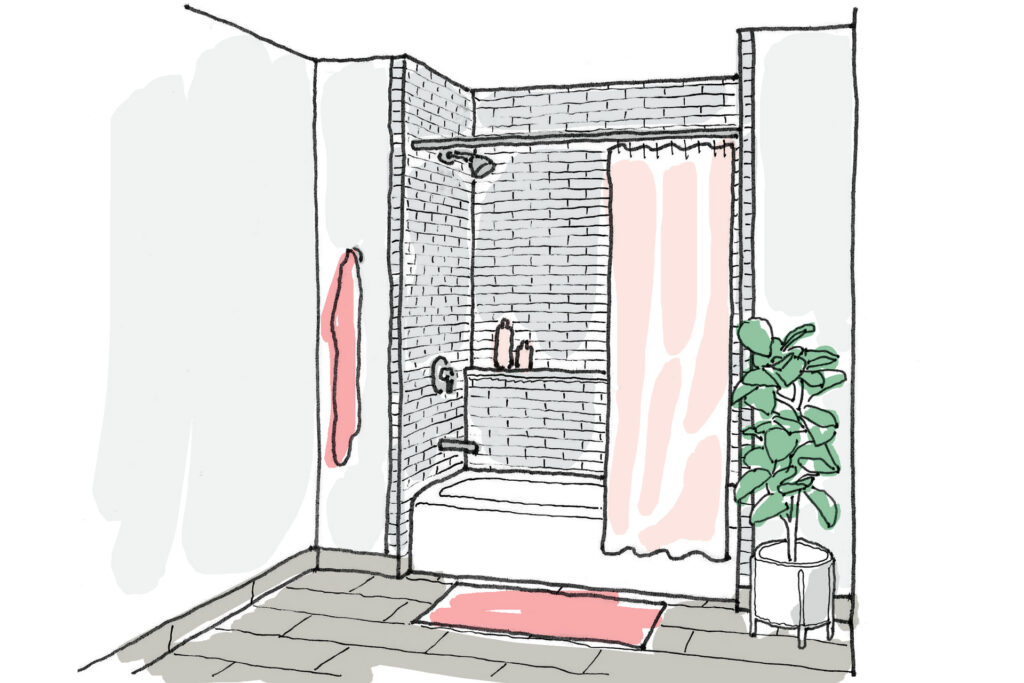
In the United States, an alcove tub is the most common tub type. Typically made of fiberglass, acrylic, stone resin, or cast iron, alcove tubs feature an integral skirt and fit within a three-sided (walled) enclosure. Tile usually covers the surrounding walls. This tub type provides more design opportunities than a tub/shower combo with limitless design detail options for the surrounding walls, niches, and shelves.
From a functional perspective, an alcove tub can serve as just a tub or, as a tub and shower by adding a shower head and diverter valve. For use as a tub only, you may select a deep option in order to enjoy a good soak. However, if you plan to use it as a tub and shower, make sure you specify one shallow enough to step over and into. Also, are you planning to bathe a child or dog in it? If it’s too deep, bathing someone else gets tricky.
Type 3—Corner Tub
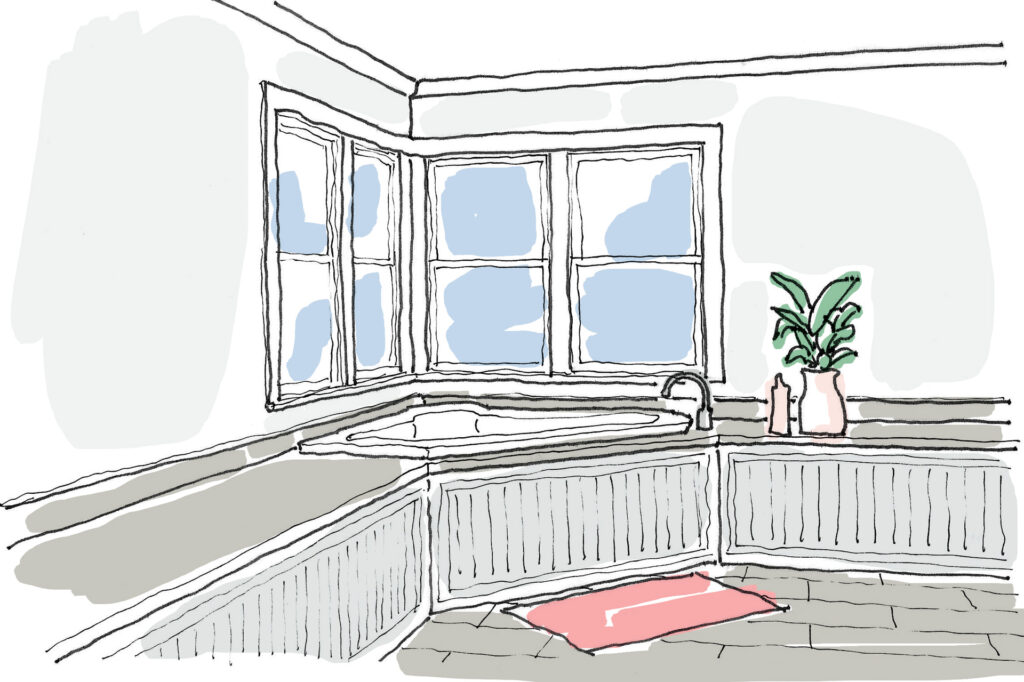
As the name suggests, corner tubs fit in the corner of a bathroom and come in a large, triangular shape. They require a lot of space—at least 60 inches x 60 inches. From traditional to modern, corner tubs support a variety of style options and interesting design details. If you have a large bathroom with an empty corner, a corner tub might be the perfect choice.
But beware, the large size means they require a lot of water. Additionally, corner tubs make house chores a bit challenging. You have to lean way over (and maybe even climb in) to reach all the surfaces. Crafted from fiberglass, acrylic, or cast iron, corner tubs are used for soaking only (not as a tub/shower combo).
Type 4—Drop-in Tub
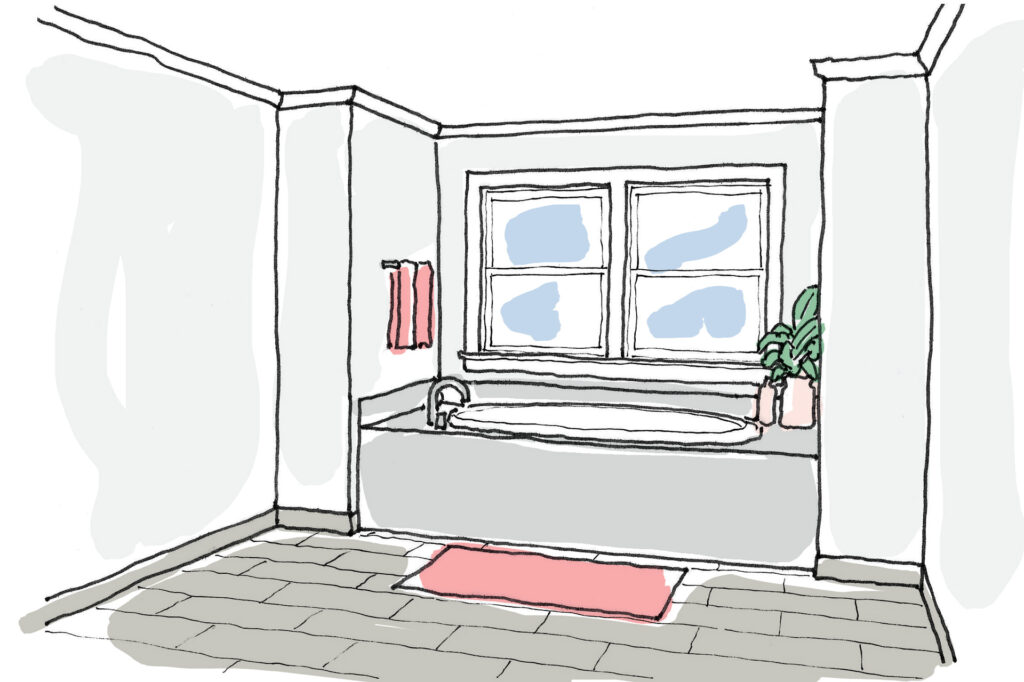
Just like a drop-in sink, a drop-in tub ‘drops’ into a prepared deck with the lip of the tub protruding above the surrounding deck. The inside of the tub is finished, but the outside isn’t, since it is covered up by the surrounding deck. This tub type can be installed into an alcove, a corner, an island, or directly into the floor. Drop-in tubs come in a huge array of sizes, shapes, and styles and support many design and customization options. Fabricated from fiberglass, acrylic, stone resin, cast iron, or solid surface, drop-in tubs typically suit more traditional homes.
Again, the drop-in tub type supports soaking only. Like corner tubs, drop-ins require a lot of water and pose cleaning challenges due to their large size and the protruding lip.
Type 5—Undermount Tub
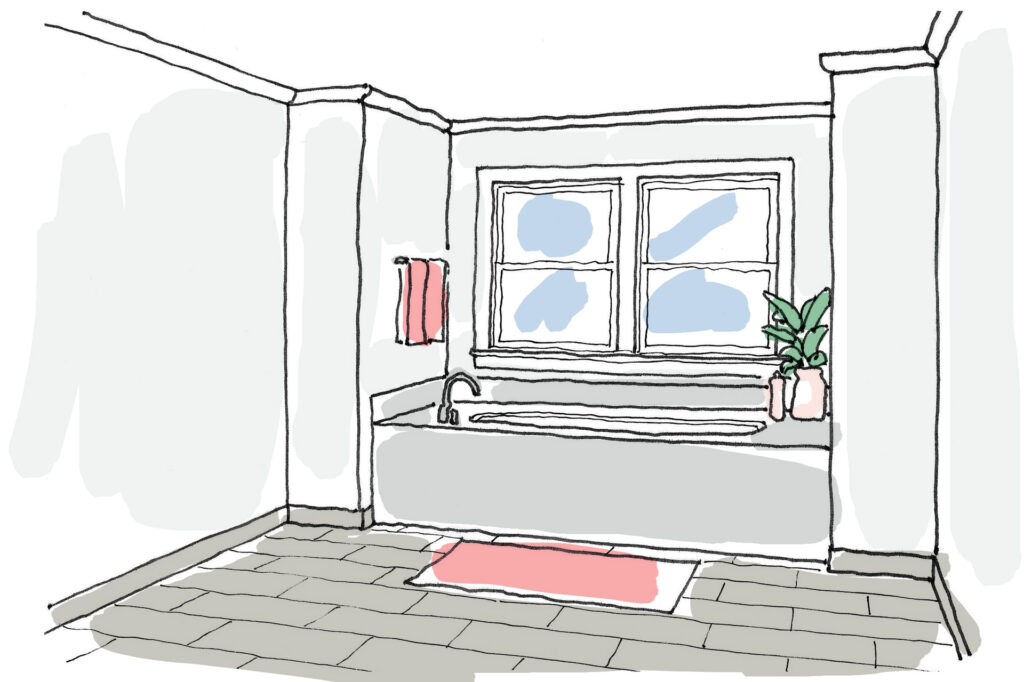
An under-mount tub is identical to a drop-in tub except that the rim of an under-mount tub sits below the surrounding deck (rather than above). Under-mounts are typically installed in an island, an alcove, or a corner. Like drop-in tubs, they come in a large selection of shapes, sizes, materials, and configurations. Perfect for contemporary bathrooms, they offer a very clean design aesthetic, since there is no lip to interrupt the deck material. Once again, typically used for soaking only.
Unlike the deck of a drop-in tub, this tub type supports easier clean-up with no protruding lip to accumulate gunk.
Type 6—Freestanding Tub
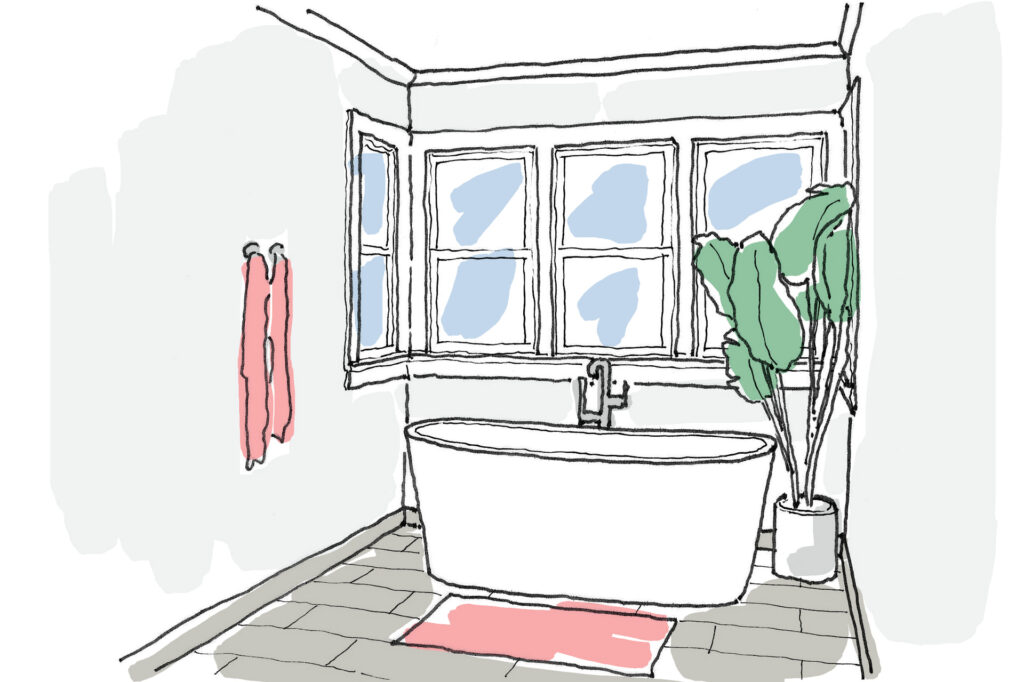
Unconnected to walls or surfaces other than the floor, freestanding tubs make a design statement in your bathroom. Available in MANY design options, ranging from modern to traditional, freestanding tubs provide a beautiful, striking bathroom centerpiece. Since they aren’t connected to a wall, the faucet is typically freestanding as well, making the hardware as much of a design statement as the tub. From acrylic, fiberglass, and cast iron to stone resin, metal, and solid surfaces, freestanding tubs also offer an array of material possibilities.
Keep in mind that freestanding tubs require a lot of space and use a lot of water. This tub type looks best with plenty of room around the tub to make it really stand out. Due to the weight of a full tub, you may need to beef up your floor framing. Freestanding tubs are used as soaking tubs only (although a classic claw-foot tub, configured with exposed piping and a shower head, is an example of a freestanding tub/shower combo). When the time comes for cleaning, remember now you have to not only scrub the tub, but also the floor under and around it, and the exposed piping.
Type 7—Walk-in Tub
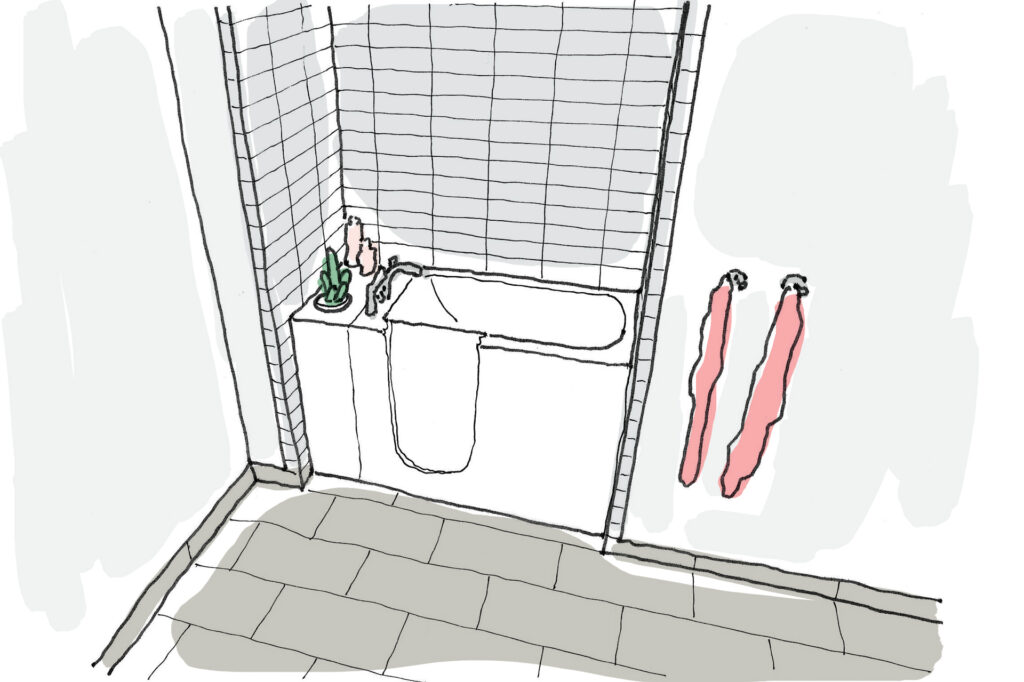
Designed for people with mobility limitations, a walk-in tub features a watertight door with a low or nonexistent threshold. This allows the bather to enter the tub without the need to step over the side of the bath. To use, the bather enters the tub before it fills and closes the door. An integral bench allows the bather to sit while the tub fills. When done, the bather must wait for the tub to completely drain before opening the door to exit.
Walk-in tubs help bathers of all mobility levels enjoy a comfortable bathtub experience while remaining independent. They often feature a handheld shower wand and can be fitted with an overhead shower head for those who want the option to shower and bathe.
The adjacent walls are usually tiled, so customization and interesting design options are possible. With a good design, walk-in tubs can look great! Not just like something you’d see in a hospital.
Typically made of fiberglass or acrylic, walk-in tubs use a lot of water, depending on size. They take anywhere from six to eight minutes to fill and two to 15 minutes to drain depending on the manufacturer.
Type 8—Japanese Soaking Tub
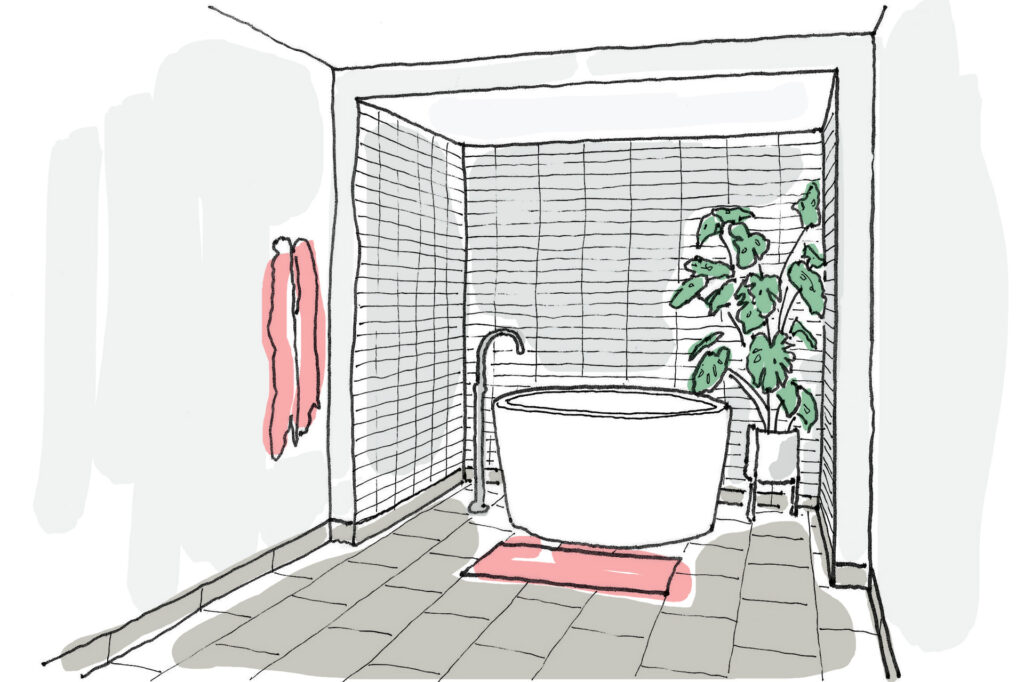
Also called an ‘ofuro,’ a Japanese soaking tub is a freestanding tub intended for relaxation and contemplation. Like other freestanding tubs, it is an eye-catching bathroom centerpiece. But unlike Western freestanding tubs, it features a more ‘upright’ design. Dimensions vary between manufacturers, but a typical Japanese soaking tub is at least 27 inches deep and no more than 4.5 feet in diameter (often less).
Japanese soaking tubs offer a serene bathing experience for soaking only, and not for washing (that happens separately). Traditional tubs are cylindrical in shape and made of hinoki wood. However, modern versions come in ovals, squares, and octagons and material options include acrylic, fiberglass, steel, and even copper.
Smaller in diameter than a typical Western soaking tub, this tub type requires the user to sit upright on a built-in seat, which may be uncomfortable for some people. They also use a lot of water. One should ensure the floor framing of the bathroom accommodates the weight of the tub when filled.
Jetted Tubs
Jetted tubs provide a spa-like experience in your home and come in two types—whirlpool and air jet.
- A whirlpool tub shoots streams of water to create a hydromassage that relieves muscle pain. Think Jacuzzi.
- An air jet tub shoots compressed air to create a bubbling sensation, which doesn’t necessarily massage muscles but creates a relaxing atmosphere. Imagine soaking in a glass of champagne!
Technically, any of the bathtubs described in this post could be jetted, though you’re more likely to find jetted tubs in the larger corner, freestanding, drop-in, under-mount, and walk-in types. Jetted tubs require an electrical source and a pump. Careful consideration should be given to the pump’s location during the design process so that it is easily accessible yet not an eyesore.
The main drawback with jetted tubs? Cleaning. Not only does the surface need cleaning, as with any tub, but the holes for the jets or air streams often accumulate gunk. This tub type requires special cleaning to keep it working properly.
Bath Time
Ready to submerge yourself in bathtub design decisions? We look forward to exploring the possibilities with you. Call us.
